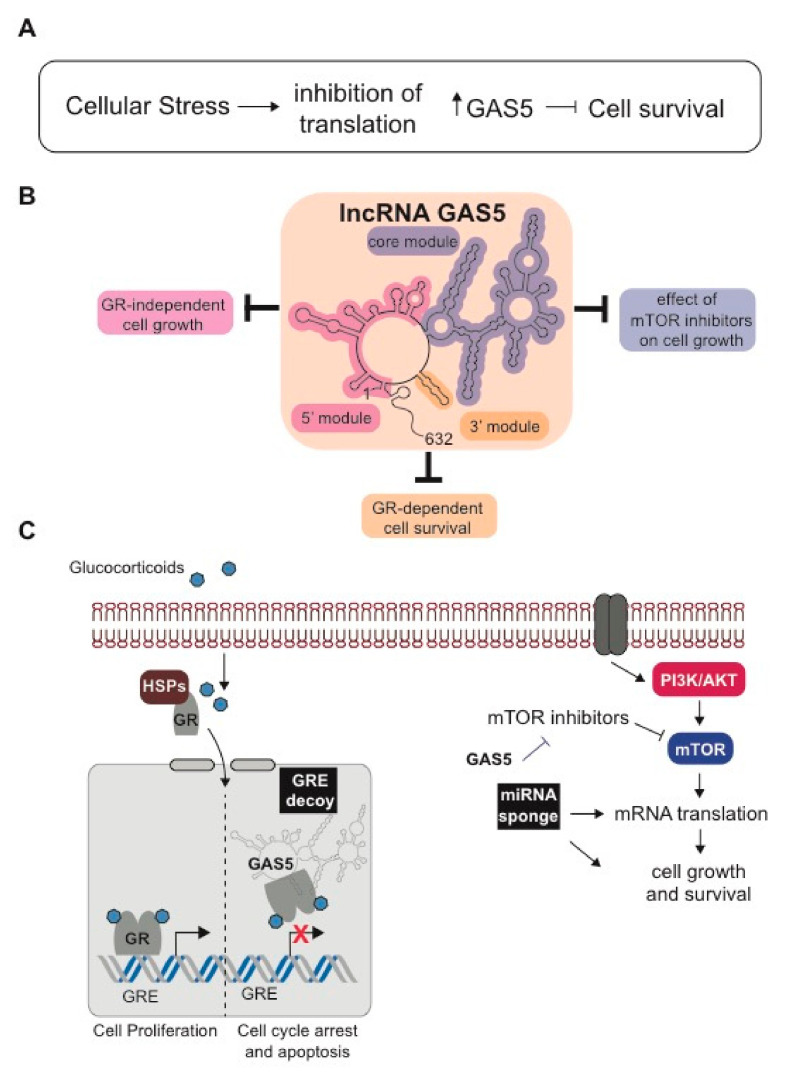Figure 3.
GAS5 lncRNA regulates cellular stress responses through multiple mechanisms. (A) Various cellular stressors, including serum or nutrient deprivation as well as various drug treatments, result in the inhibition of translation and the accumulation of GAS5 transcripts, whereby GAS5 negatively regulates cell proliferation and survival. (B) The GAS5 RNA molecule comprises three separate regions that mediate the effect of GAS5 on cell growth through distinctive mechanisms. These regions are divided into 3 modules: a 5′ unstructured region, a highly structured core region, and a 3′ terminal glucocorticoid receptor (GR) binding region. Functional analysis indicates that the 5′ module mediates the effect of GAS5 on basal cell survival and reducing the rate of cell cycle, whereas the core module is required for mediating the effects of mTOR inhibitors. (C) The mechanisms by which GAS5 regulate cell proliferation in GR-dependent (left) and GR-independent means (right) are shown. For the GR-dependent process, GAS5 functions as a glucocorticoid response element (GRE) decoy effectively sequestering GR from GRE elements in DNA and suppressing GR-dependent gene expression and cellular proliferation. For the GR-independent growth control, GAS5 can function as a miRNA sponge to regulate signaling pathways. Additionally, inhibition of the mTOR pathway downstream of PI3K/AKT signaling depends on GAS5.

